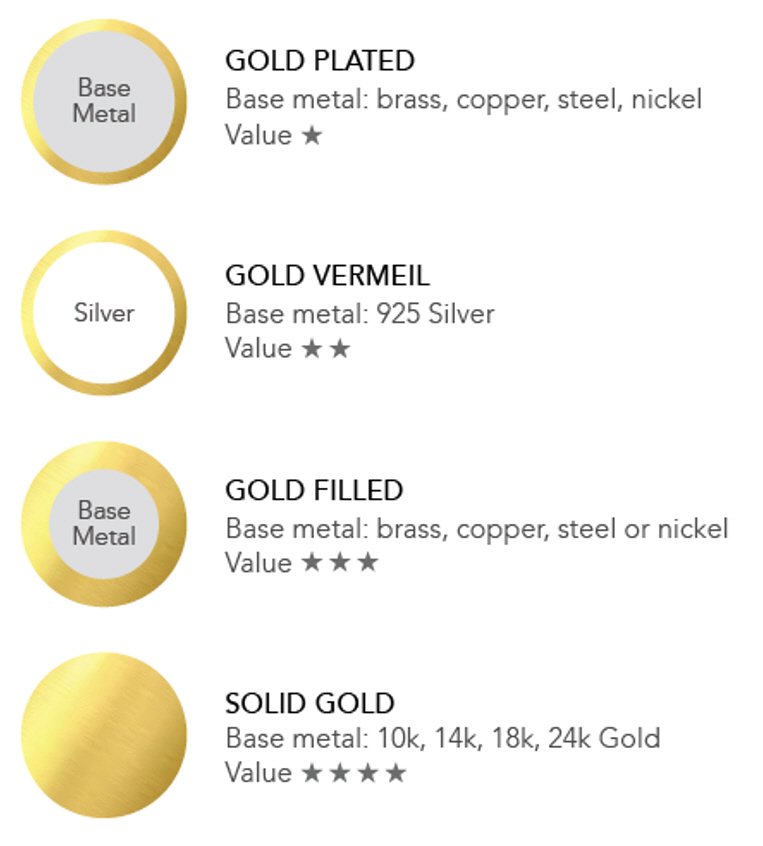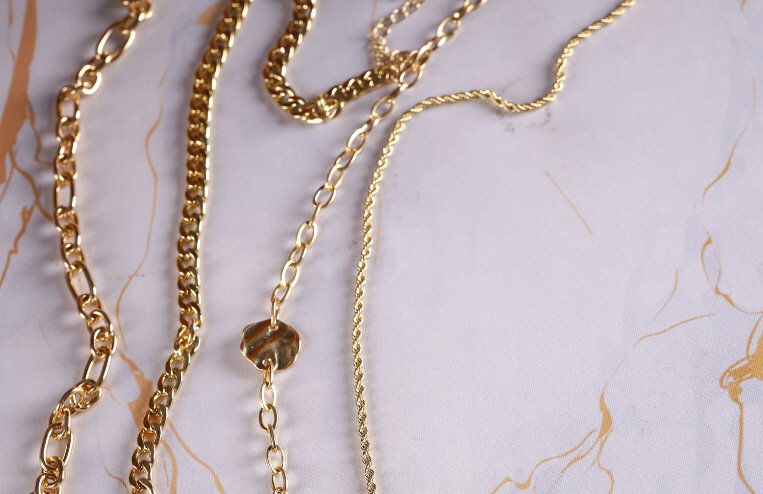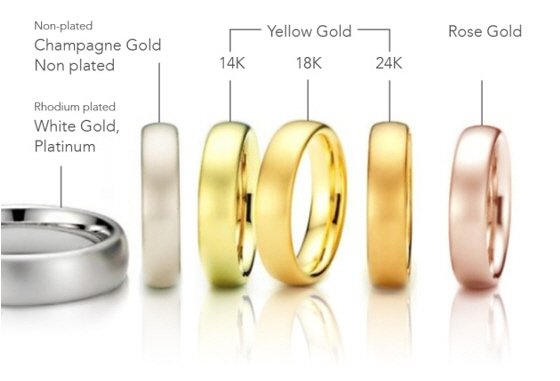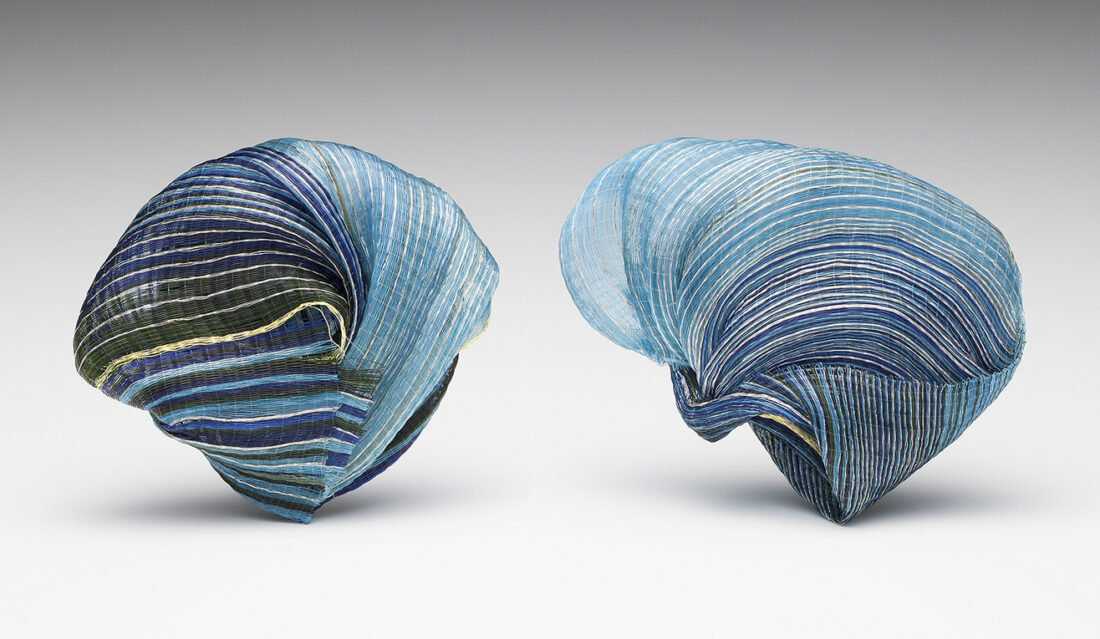
The Story of Gold 3
Trending Gold: What You Should Know Before Shopping
- Gold Plated
Gold Plated jewelry refers to a process where a thin layer of 14K, 18K, or 24K gold is applied to the surface of a non-metal material through electroplating or chemical reactions. Due to its thin coating, gold plating is susceptible to fading, peeling, and discoloration after 1-2 years of wear, requiring re-plating. Those with sensitive skin might experience irritation. Gold Plated jewelry is typically marked with 10K GP, 14K GP, 18K GP, or 24K GP. - Gold Vermeil
Gold Vermeil, also known as Silver-Gilt, involves applying gold (10K or higher) onto sterling silver (92.5% silver) through the same plating process. This method is the preferred alternative to solid gold in Europe for over a century, being used for both jewelry and decorations. It’s a great option for those with metal allergies or those needing durable, everyday wear jewelry, as it will still last even after the gold plating wears off, leaving a solid silver base. - Gold Filled
Gold Filled jewelry involves applying a thick layer of gold (14K or 18K) through a specialized process that requires heat and pressure. This results in gold-filled jewelry being more durable than gold-plated pieces—approximately 28.5 times more durable than gold-plated and 10 times more than gold vermeil. It’s hypoallergenic, resists tarnishing, and offers the same high-quality appearance as solid gold. Gold Filled is commonly marked with 10K GF, 14K GF, 18K GF, or 24K GF. - Solid Gold
Solid Gold is the highest-value form of jewelry available. The purity of gold is expressed in Karat (K). As mentioned in “Gold, 금 바로알기 #1,” pure gold is 24K, but other metals are mixed in to improve its hardness and make it more suitable for creating durable, fine designs. The lower the Karat number, the less pure gold content it has—18K, 14K, and 10K all contain varying amounts of other metals, enhancing durability and design options.
Which Product Should You Choose?
With the high cost of pure gold, many consumers look for more affordable alternatives, such as gold-plated, gold vermeil, and gold-filled jewelry. Each gold type has its advantages and disadvantages, but Solid Gold tends to be less irritating to the skin, has higher durability, and retains more value. However, due to its price, Gold Plated, Gold Vermeil, and Gold Filled options offer more affordable alternatives. For trendy, larger, or thicker jewelry, gold-plated or gold vermeil might be suitable, whereas solid gold could be a good choice for small, timeless pieces.
Ultimately, the right choice depends on factors like wear and tear, allergy potential, and the presence of pure gold in the piece. It’s important to select a product that fits your style and budget while considering the long-term durability and value of the jewelry.





